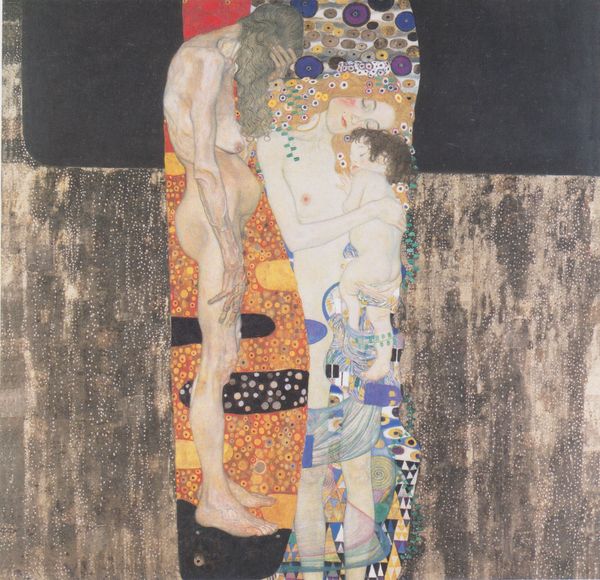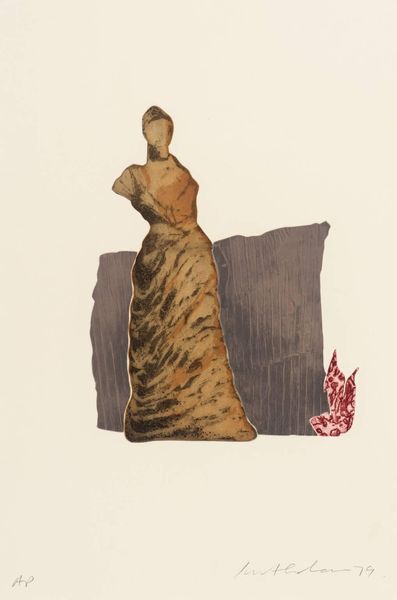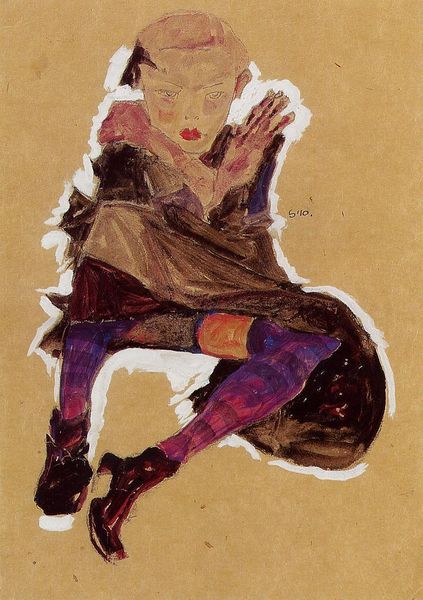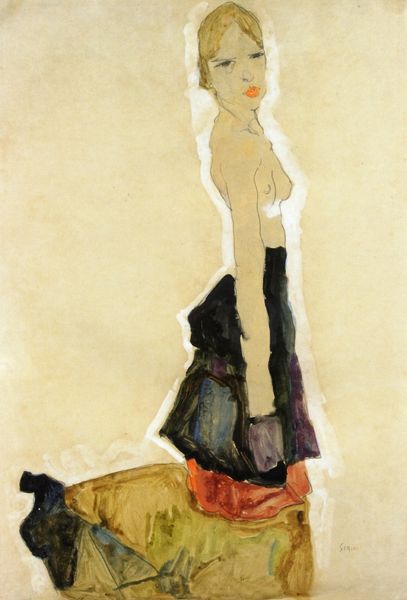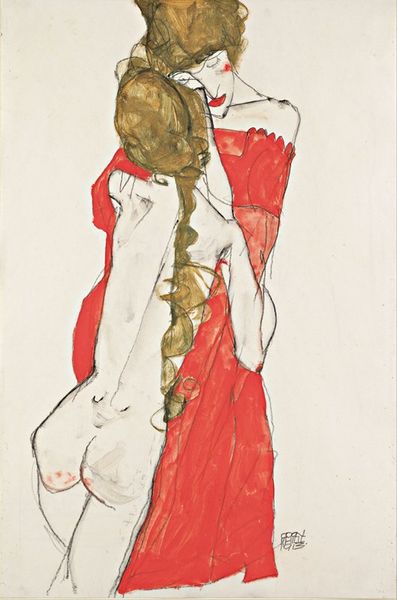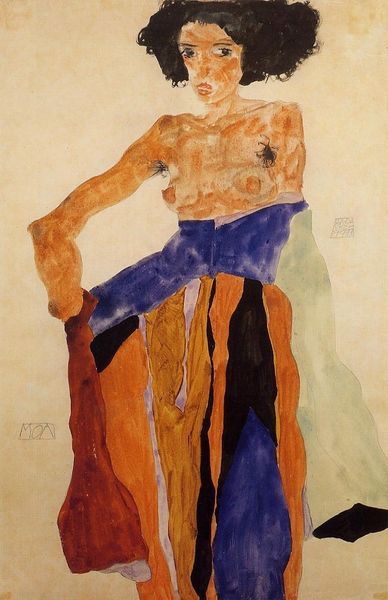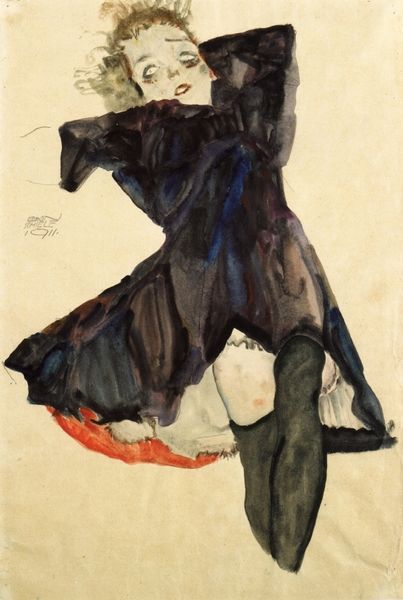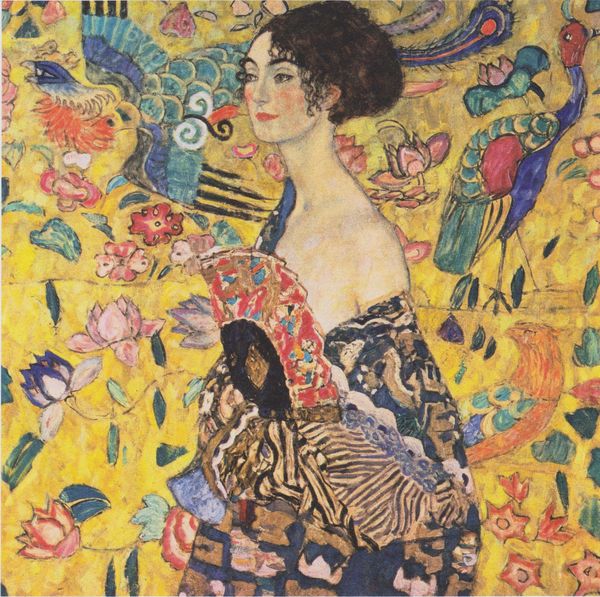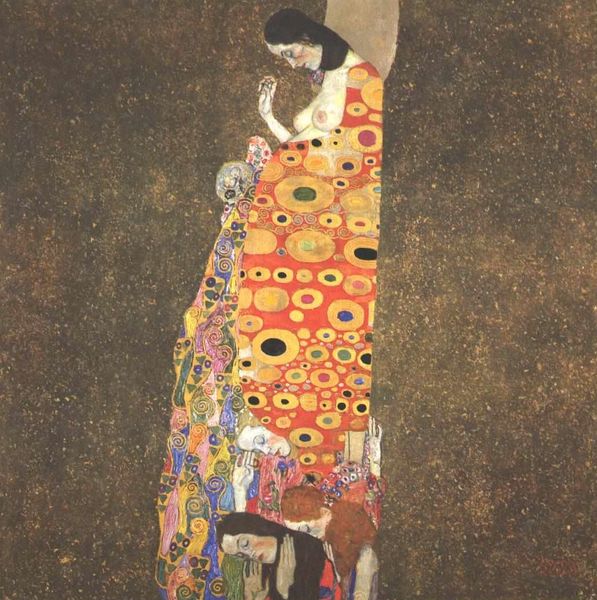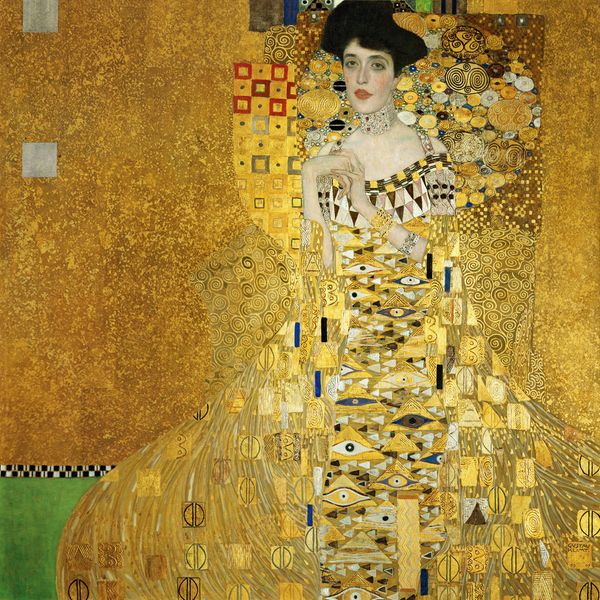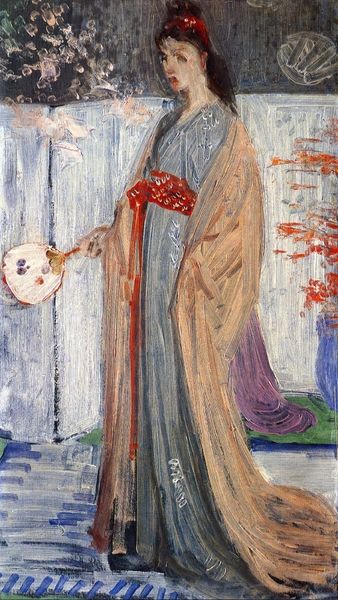
oil-paint
#
portrait
#
art-nouveau
#
oil-paint
#
figuration
#
oil painting
#
expressionism
#
nude
Dimensions: 139.5 x 140.5 cm
Copyright: Public domain
Curator: Schiele's 1909 oil on canvas, "Portrait of Gerti Schiele," presents the artist's sister in a manner both intimate and unsettling. It's currently part of MoMA's collection. What's your initial impression? Editor: Angular. The color palette, all earth tones and near-whites, heightens that impression. But the face in profile has this almost beatific look that clashes with the rest of the presentation, doesn't it? There is something vulnerable communicated with such awkward visual means. Curator: The stark lines and attenuated form contribute to what would become Schiele's signature Expressionist style. Considering his later works, it seems a relatively gentle portrayal. We see a bit of art nouveau influence here as well. Her almost iconic status in the composition brings her vulnerability to the fore. The composition places Gerti in an unstable relationship to both viewer and artist, wouldn’t you say? Editor: Unstable is a good word. She seems perched, almost on display, with this strange decorative swirl beneath her—is that fabric, a chair? It reminds me of a theatrical production, with Gerti in costume, but one that’s about to reveal hidden truths about the societal roles she plays. Also, those swathes of black look like a forced embrace. The embrace itself a repression. Curator: Very perceptive. Notice the delicate fabric pattern covering the core of her torso? It's as if Schiele uses this to represent societal expectations covering and obscuring deeper realities of this woman. There is that dance of revelation and concealment again! The slightly upturned head is as if there is divine femininity she embodies, while also hinting at something unseen, something profound but inaccessible. It mirrors similar compositions throughout Western art, imbuing Gerti with those allusions even while portraying her in a modernist idiom. Editor: And what does that juxtaposition do for her reception? He paints his sister, yet simultaneously places her within an art historical canon. And simultaneously twists both? Does this lift her up or dissect her, making her both particular person and archetype at once? It speaks to how portraiture, historically, functioned for social mobility—something disrupted in Expressionism. Curator: Exactly. He disrupts yet invokes. He paints *Gerti* but through her he presents the archetypal female of the age and holds a mirror to his audience's collective perceptions and social values. That mirror reflects our ongoing relationship to that period, more than a century later. Editor: Yes. This piece certainly provokes those sorts of lasting reflections, unsettling our comfortable historical distance. Thank you!
Comments
No comments
Be the first to comment and join the conversation on the ultimate creative platform.
